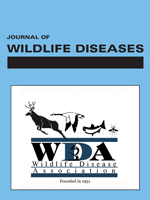The overall prevalence of cryptorchidism in Florida panthers (Puma concolor coryi) from 1972–2001 was 49% (24/49), with a significant increase over time. The earliest age at which descent of both testicles was known to occur was 2 mo and the latest was 10–13 mo. Delayed testicular descent was documented in 23% (8/35) of juveniles examined. Most retained testicles were in the inguinal canal. There was no apparent difference in reproductive success between cryptorchid and normal panthers, although no bilaterally cryptorchid panthers were known to have sired litters. Cryptorchidism was thought to be a manifestation of inbreeding and was one of several factors that led to the development of a genetic restoration plan whereby eight female puma from Texas were released into the panther population in 1995. None of the progeny resulting from genetic restoration efforts has been cryptorchid. This report provides evidence that cryptorchidism in panthers is genetically rather than environmentally based, and demonstrates the utility of genetic restoration for eliminating certain deleterious traits that result from inbreeding.
How to translate text using browser tools
1 October 2002
CRYPTORCHIDISM IN FLORIDA PANTHERS: PREVALENCE, FEATURES, AND INFLUENCE OF GENETIC RESTORATION
Kristin G. Mansfield,
E. Darrell Land

Journal of Wildlife Diseases
Vol. 38 • No. 4
October 2002
Vol. 38 • No. 4
October 2002
cryptorchidism
endangered species
Florida panther
genetic restoration
inbreeding
pathology
Puma concolor coryi




